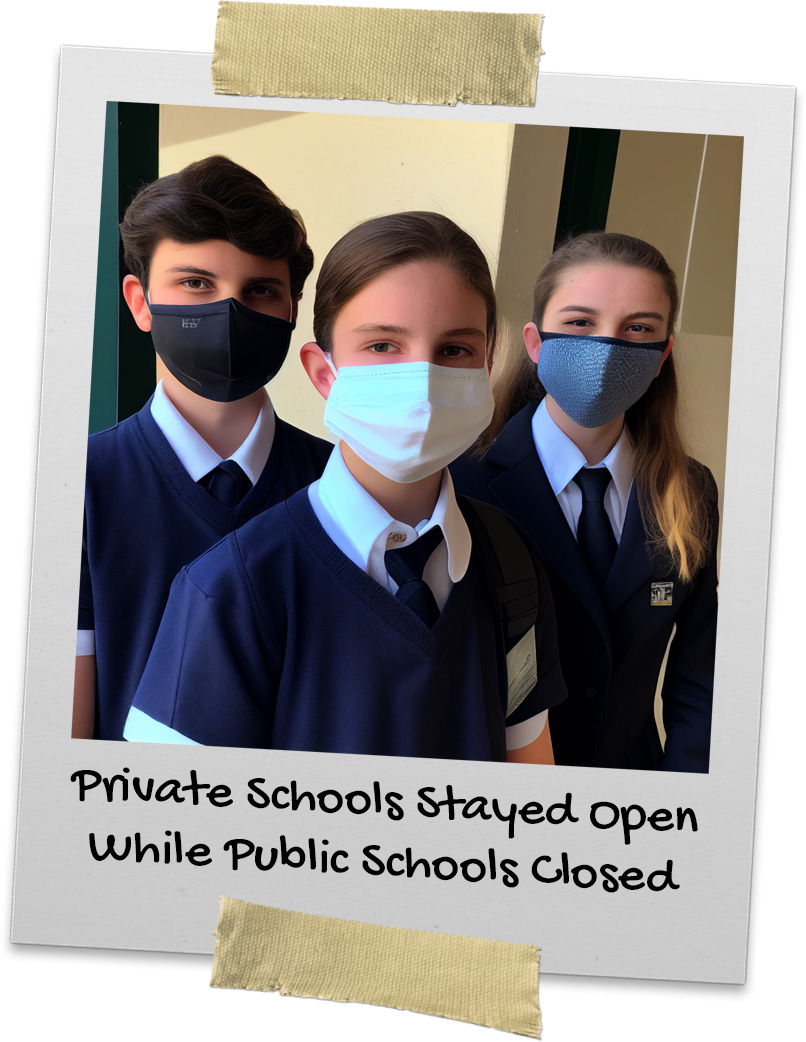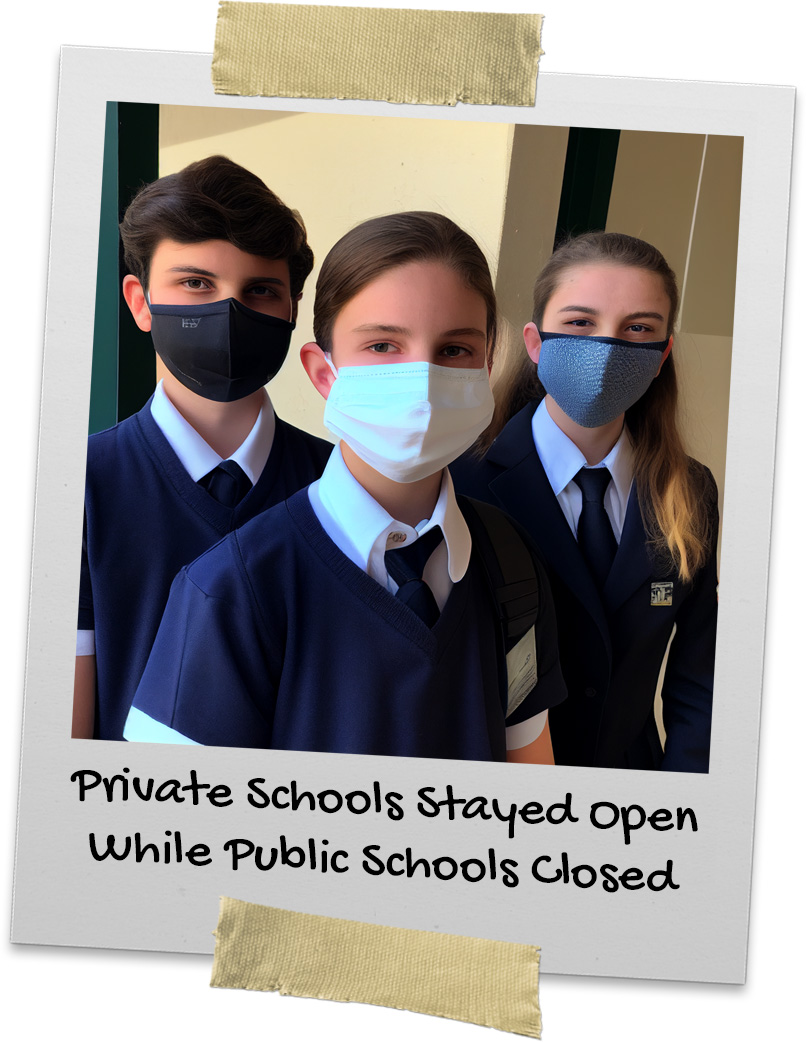Private Schools Stayed Open While Public Schools Closed


COVID-19 exposed a variety of ironies and inequalities in society. One of the most striking examples of this was how private and public schools reacted differently during the early months of the crisis.
While public schools were forced by the government to shut their doors and pivot to remote learning, many private schools remained open.
At first glance, this might not seem particularly ironic. After all, private schools are typically known for their smaller class sizes, more resources, and more flexible schedules. These factors could have made it easier for them to implement social distancing measures and keep students safe. Many private schools had the financial resources to invest in additional safety measures to help with cleaning and disinfection. Public schools, on the other hand, often struggled to afford these same resources, even as they were being mandated to implement them.
Private schools, by their very nature, are designed to cater to the needs of a select group of students. They often have more stringent admissions criteria, and they charge tuition fees. This means that they are typically attended by students from more privileged backgrounds, who are less likely to be impacted by the virus in the first place.
Public schools, on the other hand, serve a more diverse population of students. Kids living in higher levels of poverty were more likely to attend public school and have more difficulty with distance learning. U.S. counties with the lowest median income had death rates at least two times higher than that of the counties with the highest income.
The irony, then, is that the schools that were most able to remain open during the pandemic were the ones that were serving the students who were least likely to be impacted by it. Meanwhile, the schools that were serving the most vulnerable students were the ones that were forced to close their doors.
It was one of the many ways that more affluent people were less affected by COVID-19 and another example of how policymakers may have inadvertently hurt the students they were trying to protect.



